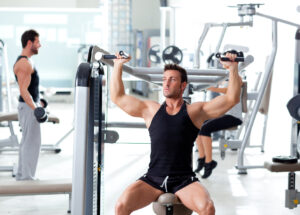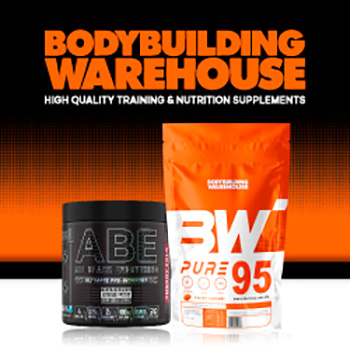
Summary: Learning about the best weightlifting warm up exercises is crucial for maximizing performance and preventing injury.
- By increasing muscle temperature, blood flow, and joint mobility, the right weightlifting warm up exercises can lower the risk of injury from weightlifting by as much as 54%.
- A comprehensive warm up routine should include three stages: general cardio activation, dynamic mobility drills, and movement specific preparation.
- Static stretching before lifting can temporarily reduce muscle strength by 5-8%, so dynamic mobility exercises are the preferred warm up option.
- The pliability approach to mobility training gives weightlifters targeted exercises that address individual limitations and improve performance.
- Most weightlifting injuries happen in the first 15 minutes of training when muscles and joints aren’t properly prepared for heavy loads.
Walk into any gym and you’ll see two types of weightlifters. There are those who immediately start with heavy sets and those who carefully prepare their bodies before picking up a weight. Can you guess which group has fewer injuries and makes consistent progress? The difference isn’t about talent or genetics. It’s about understanding the critical importance of proper warm up protocols before demanding performances from your body.
Many weightlifters see warming up as optional, but they don’t realize they’re sacrificing their safety and performance potential. According to a study published in the Journal of Strength and Conditioning Research, a proper warm up routine can increase power output by up to 12% and significantly lower the risk of injury during weightlifting sessions. However, many people still see it as wasted time that could be better spent “actually lifting.”
Common Reasons Weightlifters Get Hurt (And How You Can Prevent It)
The numbers don’t lie. Roughly 36% of weightlifting injuries happen within the first 15 minutes of training. This isn’t just a fluke. It’s exactly when most lifters are still “cold,” with tissues not yet ready for the demands about to be put on them. Your body requires a gradual transition from rest to high intensity effort. It cannot handle a sudden change from sitting at a desk all day to squatting twice your bodyweight.
Many weightlifting injuries such as pec tears, lower back strains, and shoulder impingements are often the result of not adequately preparing the body. The answer is not to avoid challenging lifts. Instead, prepare your body to handle them properly. A thorough warm up is not just about preventing injuries. It’s about optimizing your performance and ensuring that you can lift for decades. This way, you avoid having your lifting career cut short by preventable injuries.
“The quality of your warm up directly predicts the quality of your workout. Five minutes of intelligent preparation can save you five months of injury rehabilitation.” Dr. Stuart McGill, Spine Biomechanics Expert
The 5-Minute Science: How Warm Ups Prevent Weightlifting Injuries
Understanding why warm-ups work requires looking at what happens physiologically when you transition from rest to exercise. Your body undergoes several critical changes during an effective warm-up. Each change contributes to both performance enhancement and injury prevention. These aren’t optional benefits. They’re necessary adaptations for safe, effective lifting.
The Perks of Warmth and Blood Flow
Starting with light movement heats up your core and muscles, which is more significant than you may think. Studies have found that every 1°C increase in muscle temperature improves muscle contraction efficiency by about 4-7%. This rise in temperature alters your muscles and tendons’ viscoelastic properties. This makes them more flexible and reactive.
- Increased muscle temperature improves enzyme activity and metabolic efficiency
- Enhanced blood flow delivers more oxygen and nutrients to working muscles
- Improved tissue elasticity reduces resistance to stretching and extension
- Decreased viscosity in muscles allows for smoother, more efficient contractions
- Accelerated nerve impulse transmission speeds up reaction time and coordination
The cardiovascular system also adapts during warm up, gradually increasing blood flow to working muscles. This transition is crucial sudden demands for increased blood flow without preparation can stress the cardiovascular system unnecessarily. Proper warm up allows your heart rate to rise gradually, ensuring optimal oxygen delivery when you begin your working sets.
Waking Up Your Brain and Muscles for Better Strength Training
Many people forget to consider neural activation when they warm up. This process is all about “waking up” the neurological pathways that connect your brain and muscles. A good warm up will activate the motor units you’ll need for your lifting session, which will improve your coordination and the recruitment patterns of your muscle fibres. This is why so many lifters feel “stronger” after they warm up properly, even if they’re more tired.
Research has shown that warm-up routines greatly enhance neural efficiency. This leads to improved form, more effective movement, and ultimately safer lifting. Your central nervous system requires time to fine tune the firing patterns of muscle fibres, especially for complex multi joint movements like squats, deadlifts, and Olympic lifts.
By slowly incorporating movement patterns that mirror your working sets, you’re basically “rehearsing” the neural pathways that will be used during heavier lifts. This rehearsal effect can enhance movement quality and decrease compensation patterns that frequently result in injury.
Enhancing Joint Lubrication and Mobility
As you warm up, the amount of synovial fluid in your joints increases. This fluid acts as a natural lubricant, reducing friction between the surfaces of your cartilage and nourishing the tissues in your joints. If you don’t warm up properly, your joints won’t be as well lubricated, which can lead to more wear and tear with each rep. You can improve the distribution of synovial fluid significantly by moving your joints for just 2-3 minutes.
An effective warm up greatly enhances your mobility. This is your ability to actively control a joint through its full range of motion. Unlike static flexibility, mobility involves strength and coordination throughout a movement pattern. This is a key difference for weightlifters. Lifting requires controlled strength through complete ranges of motion rather than passive flexibility.
The Ideal Warm Up Routine for Weightlifters
Warming up in a systematic manner is the most effective. Instead of doing random movements, plan your warm up in stages. This approach slowly gets your body ready for the exact demands of your workout. This careful approach makes sure you target all the physiological systems while also being time efficient.
Step 1: Quick Cardio Warm Up (2-3 Minutes)
Start with a brief cardio warm-up to get your body temperature up. This will get your blood flowing and get your heart ready for action. The point is not to wear yourself out. Instead, get your body from resting mode to active mode. Choose low impact cardio that won’t mess with your lifting. Rowing, biking, or a light jog are all good choices for most people who lift weights.
Work at a level that slightly raises your breathing and heart rate without making you tired. You should be able to talk easily during this phase. Within 2-3 minutes, you should start to see a light sweat forming. This is a great sign that your body temperature is rising as it should.
Phase 2: Dynamic Mobility Drills (3-5 Minutes)
After your body temperature has risen, you should move on to dynamic mobility exercises. These should focus on key movement patterns and joint systems. These exercises should be a mix of movement and gentle stretching. They get your body ready for the ranges of motion you’ll be using during your workout. Unlike static stretching, dynamic movements keep the muscles active while also improving range of motion.
Choose between 4 to 6 dynamic mobility exercises that focus on the main joints and muscles you will be working out for the day. If you’re doing a lower body workout, concentrate on hip, knee, and ankle mobility. For an upper body workout, your warm-up should target shoulder, thoracic spine, and wrist mobility. If you’re doing a full body workout, do exercises that improve the mobility of all major joint systems.
Step 3: Preparing for Specific Movements (5 Minutes)
The last step links your general warm up to your workout sets. You’ll be doing your workout exercises here, but you’ll be gradually increasing the weight. Begin with just the empty bar or very light weights. Focus on perfecting your form while gradually adding weight with each set. This gradual increase in weight prepares your neuromuscular system. Specifically for the movements you’ll be doing in your workout.
Warming up with exercises specific to your workout has several benefits. It helps you nail down your form. It allows you to spot any potential problems before you add a lot of weight. Finally, it finishes getting your body ready for a hard workout. For big, compound movements like squats or deadlifts, you should do 3-5 warm-up sets. Start with a weight that’s about 30-40% of the weight you’ll be lifting in your workout, and gradually add more. For isolation exercises, you usually only need 1-2 warm-up sets with lighter weights.






